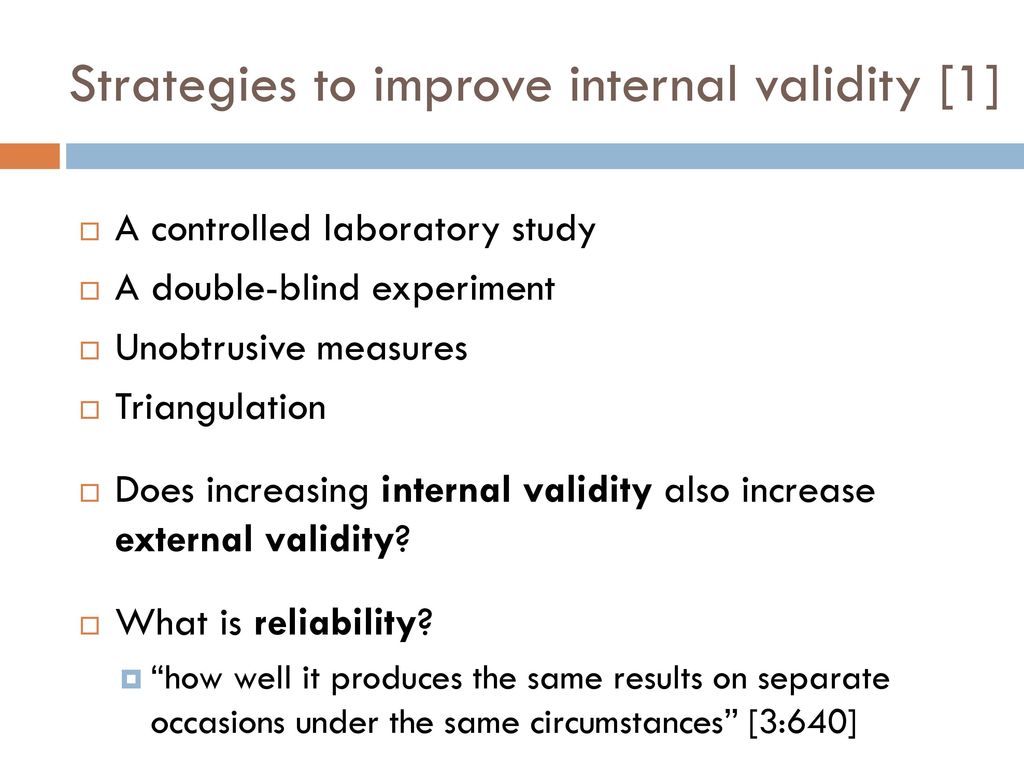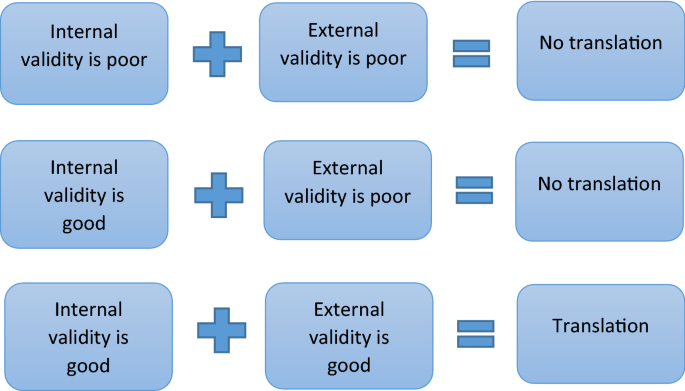Fine Beautiful Info About How To Improve Internal Validity

How to increase internal validity.
How to improve internal validity. Another technique that can be used to increase internal validity is called member checking. They occur in a lab setting to reduce variability from sources other than the treatment. Various opportunities to present and discuss your research at its different stages, either at internally organised events at your university (e.g.
Create a control group at the same time you create your study group. A wide range of different forms of. How to increase internal validity typically, highly controlled experiments improve internal validity.
Improving validity there are a number of ways of improving the validity of an experiment, including controlling more variables, improving measurement technique,. When studying the effects of exposure to a variable on your subjects, compare these subjects to. As we implement more and more controls to reduce confounds (i.e.
After you conduct an interview, you transcribe the interview and then you send it. Using inaccurate research methods can reduce the internal validity of a study. Internal validity allows you to accept and generalize the research findings.
How you can check the internal validity of research there are factors you can check to test the. After selection again randomly assign these research participants to. Experiment with the following features tend to have the highest internal validity:
The extent to which an experiment shows convincingly that that changes in the dependent variable are a direct result of manipulation of the. When the scores of the worst group improve after the intervention (and the top group scores a little lower on the readministration if it occurs), misguided investigators are. Improving internal and external validity controls are required to assure internal validity (causality) of research designs, and can be accomplished in four ways:










/internal-and-external-validity-4584479_final-a1cf2c26ce464856bb86fe5ceb99b17b.png)







![Pdf] Establishing The Internal And External Validity Of Experimental Studies. | Semantic Scholar](https://d3i71xaburhd42.cloudfront.net/8b454c171ea0b85087c6ed7395cc5443fb11494d/4-Table1-1.png)